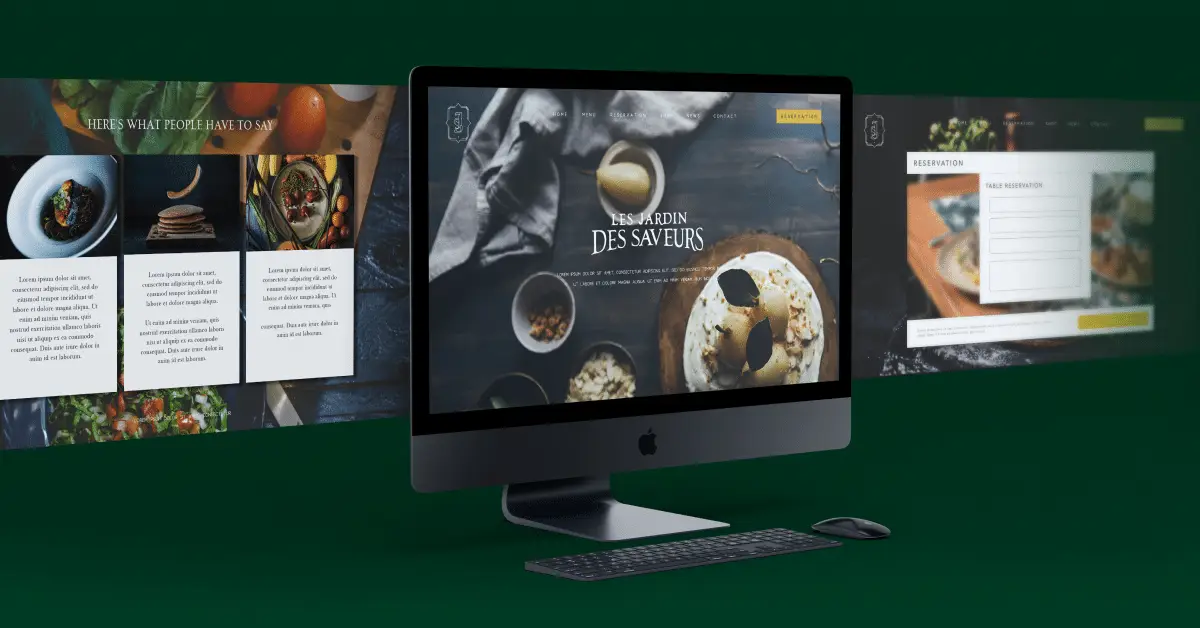A study from the journal Behaviour and Information Technology revealed that web designers only have 50 milliseconds to make a good first impression, as visual attractiveness is the primary deciding factor that influences a visitor’s trust.
That means what your site looks like is crucial to attracting and keeping your customers—two essential things that startups need especially this early in the business.
So if you’re about to launch your website or you want to improve what you currently have, here are some tips that you can use as your checklist:
1. Know Your Audience
Similar to every campaign with the end-goal of attracting (and converting) more customers, site design should also start with market research. Have a clear idea of who your end-user is—demographics, what resonates with them, what they are looking for, etc.
For instance, colors that work for the younger crowd may turn the older demographic off. A layout that Gen Zs will find visually appealing may not work with C-level executives.
Conduct thorough market research and leverage that data to guide and improve your site design.
2. Less is More
Try to avoid adding more than what’s necessary to your website, whether that’s graphics, peppering pages with call-to-action (CTA) buttons, or playing with several colors. Google published a study showing that sites with high visual complexity lead to a more negative first impression.
For a less complex site, here are a few things you can bear in mind:
- Color — Learning the psychology of colors, especially with how it influences conversions (e.g. which color cultivates trust, which color resonates with men/women), will be of great help. One or two colors, as well as neutral hues, are often good enough.
- Layout — Instead of reinventing the wheel to make your site look unique, consider sticking with standard site layouts, as non-standard ones can end up confusing people. If this is outside your skillset, you can also find web designers who can inject creativity and elevate an otherwise bland, standard layout.
- Limit choices — If you give a person more choices, the more time it takes for them to decide. Simplify what you can, including limiting form fields, having one goal for each page, focusing on one CTA, and reducing the items on your navigation menu.
- Fonts — There are so many fonts to choose from, but this decision can either hold people’s attention or make everything harder to read. A general rule of thumb is to stick to two fonts, but make sure you are choosing the right combination.
3. Use Visual Cues
Understanding the principles of visual hierarchy can make the information on each page easier to understand and follow.
For instance, bigger fonts attract more attention so reserve that for your headlines. Contrasting colors will catch the eye, which works well for CTA buttons. White spaces can help the eyes ‘breathe’, so breaking content into shorter paragraphs can make them more readable.
By doing this right, you can subtly direct a visitor’s attention towards conversions.
4. Optimize for Mobile
In 2019, there were 6.8 billion people worldwide who used mobile devices. By 2023, this is expected to go up to 7.33 billion people. If your website is still not optimized for mobile use, some steps you can do today include using a responsive theme, simplifying menus, including a search function, and having clear CTAs.
Apart from the fact that 73% of customers won’t engage with a website that doesn’t display well on their device, a responsive design also has the added benefit of helping your site rank better on search engines.
Google’s free tool is a great way to check if your site is mobile-friendly.
5. Simple and Easy Navigation
According to a Hubspot study, 76% of consumers say they want a website that makes it easy for them to find what they are looking for.
A complicated design will not only alienate most users but will also confuse them and push them to leave. To avoid this, consider doing the following:
- Create a sitemap so you can visualize your navigation planning
- Follow the default menus that come with most built-in themes (unless you have a simpler layout)
- Link logos to your homepage
- Use sticky navigation
6. Clear CTAs
Whether it’s for an email signup, booking a free demo, or downloading a whitepaper, your CTA needs to be clear and concise with a button that stands out from the rest of the page.
You can test the color, copy, and shape of your CTA buttons to find out which iteration will give you the best conversions. Check how these buttons will appear on mobile devices as the smaller screen size may affect it.
7. Stick to Your Brand Identity
Make sure that the design elements you implement are in line with your overall brand identity.
If you have other online or offline channels, your logo, fonts, and the colors that you use need to be cohesive across the board. You wouldn’t want your customers to come from your social media accounts, for instance, only to go to your website that looks completely different, as this will confuse them and/or make them think you’re not legitimate.
8. Improve Site Load Time
When it comes to your site’s load time, faster is always better. Google recently found that 10 seconds of load time on mobile saw a 123% probability of visitors leaving; 1 to 3 seconds is the ideal range.
From a design perspective, you can improve your site’s loading time by:
- Compressing text and images which are often the culprits for slow speeds
- Implementing responsive design for mobile-friendliness
- Choosing a host with good servers
- Leveraging browser caching
Tools like Google PageSpeed Insights, Pingdom, or GTmetrix are some of the free tools we recommend to see what you need to improve on.
9. Publish Relevant Content
Copywriting goes hand-in-hand with design, whether that’s for your homepage, landing pages, or your blog.
Make sure that your site contains content that your audience will find helpful. This brings us back to the value of market research. If you know how your audience thinks and the problems they want to solve, then you can create content that reflects those pain points.
10. Keep Testing
Lastly, you won’t know with 100% certainty that your design works if you don’t regularly check your analytics and conduct split testing. Will orange or blue CTA buttons work? How about rounded versus square buttons?
You can test several iterations of your website and interview your target audience to figure out what’s working and not working for them. You can even do this prior to your launch. This might take time, but a well-designed site will perform better for your startup’s bottomline.
Design It Right
In the online world where there’s a multitude of options, your web design can spell the difference between a visitor scrolling down the page or quickly clicking the x button. Poor design can damage your credibility, make your site look outdated, and ultimately, drive potential customers away.
If you need help with improving your current site or you want to get it right on your launch, our professional web designers can blend aesthetics with functionality, giving your site the visual boost it needs. Reach out your Design Force team and let us walk you through our web design services.



